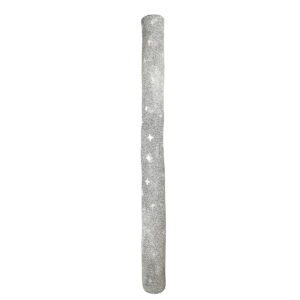
DOB 1952
Naminapu’s major interest is her art. She is an extremely versatile artist with skills in the areas of painting, carving, screen-printing, weaving, lino-cuts and batik work. As a child she used to sit for hours patiently watching her father paint. At about the age of 12, she began to learn herself, and was fortunate in being taught by her father’s brother, Narritjin Maymuru, as well as by her own father, Nånyin Maymuru. Both men were extremely able and well-known artists, whose works hang in many Australian and overseas museums. As one of the first Yolngu women to be taught to paint miny’tji (sacred creation clan designs) she was part of the historic adaptations by the elders of the Yolngu in the last forty years which included the revelation of previously restricted designs in pursuit of justice in the Land Rights struggle (for example, The Bark Petition, The Yirrkala Church Panels)
Naminapu Maymuru was born a member of the Mangalili clan, at the Yirrkala mission station in Northeast Arnhem Land in Northern Australia in 1952. After attending the mission school,she worked for some time in the store and craft shop
and also helped out in the local bank.
When the Homeland Centre of Gurka’wuy was established in 1973, Naminapu went to live there with her husband and young family of three children. These were the early days of the Homeland Movement which included the establishment by Narritjin of the Mangalili homeland of Djarrakpi (extensively documented by Ian Dunlop of Film Australia in the twenty two films of the Yirrkala Film Project). During the years she spent there, Naminapu worked as a teacher trainee and later, on her return to Yirrkala, completed her teacher training.
When she later married Leon White, a teacher in the Northern Territory, Naminapu went to live for several years in Melbourne and Darwin. She has travelled within Australia quite extensively as well as to Japan.
Info (c) Buku-Larryngay Mulka